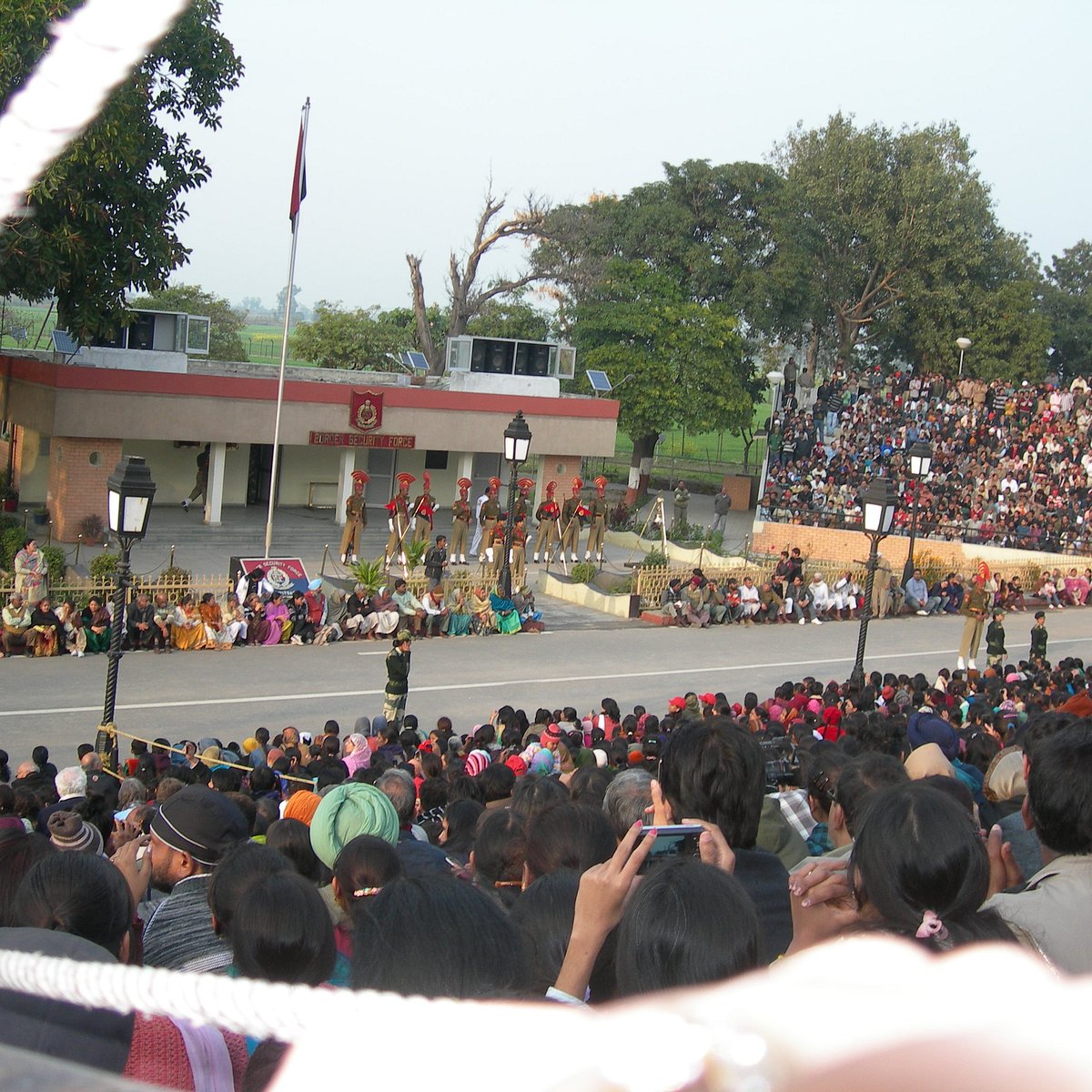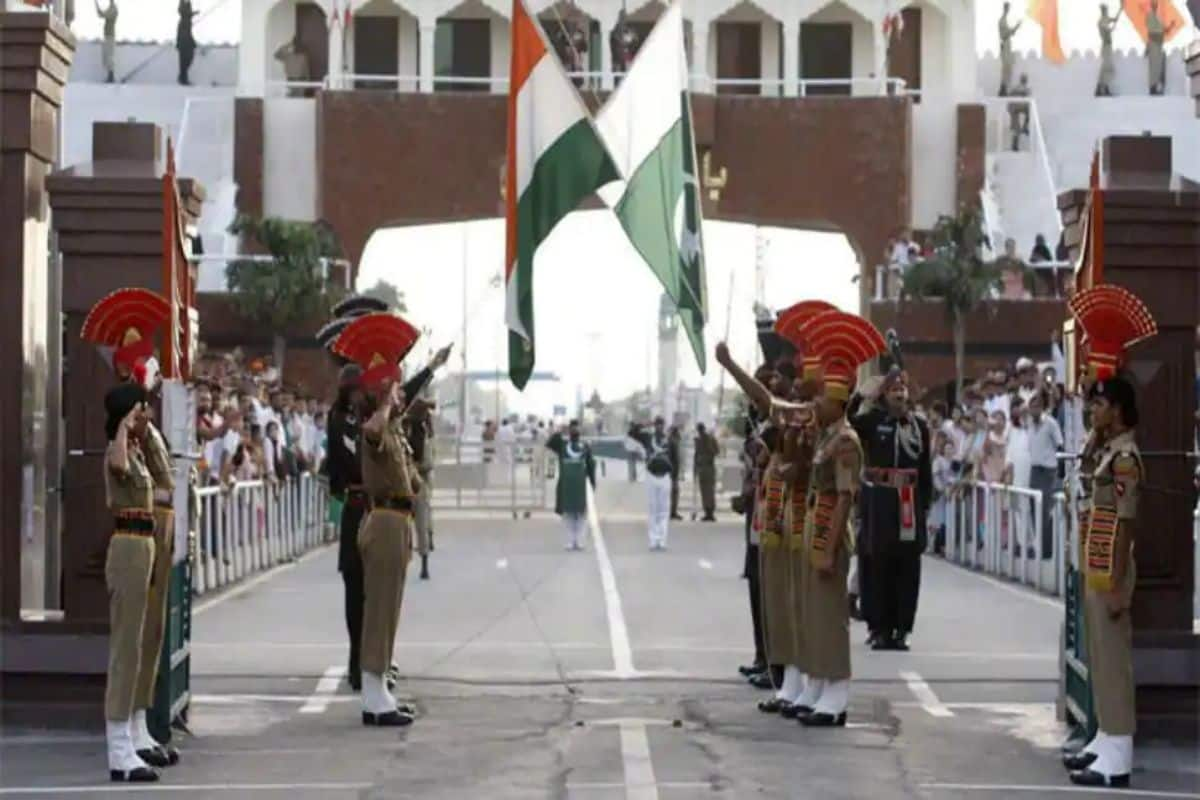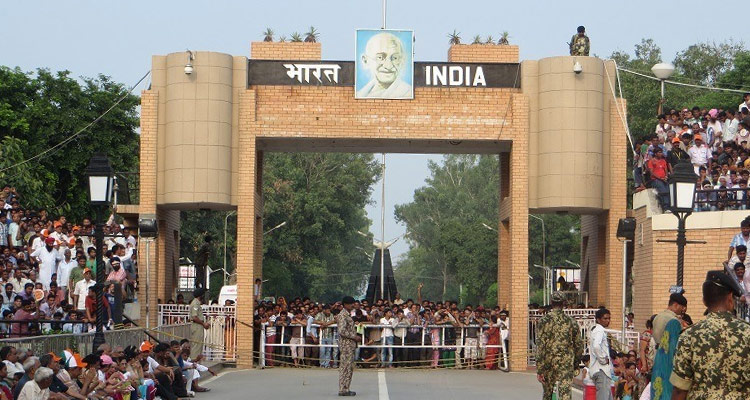Witness the Thrill: Wagah Border Ceremony in Amritsar

Introduction to the Wagah Border Ceremony in Amritsar
Overview of the significance and history of the Wagah Border Ceremony
The Wagah Border Ceremony is a highly ritualistic military practice that takes place every evening at the Wagah Border, which is the only road crossing between India and Pakistan. The ceremony symbolises the rivalry and cooperation between the two countries, dating back to the partition of India in 1947.
The carefully choreographed event involves elaborate marching, hoisting of flags, and aggressive gestures between the soldiers of both nations, culminating in the lowering of the flags and closing of the border gates.
Location and timing of the Wagah Border Ceremony
The Wagah Border Ceremony is held at the Wagah-Attari border crossing near Amritsar in the state of Punjab, India, around 28 kilometres from Lahore, Pakistan. The ceremony takes place every evening before sunset, just before the border gates are closed for the night. Visitors from India and Pakistan gather at the border to witness this unique display of military pageantry and national pride.
| Aspect | Details |
|---|---|
| Location | Wagah-Attari border crossing near Amritsar |
| Distance from Lahore | Approximately 28 kilometres |
| Frequency | Daily in the evening before sunset |
| Duration | Around 45 minutes |
| Highlights | Elaborate marching, flag hoisting, gate closing |
| Audience | Visitors from India and Pakistan |
Iconic Rituals at the Wagah Border Ceremony
Military parade and flag-lowering ceremony
The Wagah Border Ceremony is a revered military spectacle that unfolds every evening at the Wagah-Attari border crossing near Amritsar. Located approximately 28 kilometres from Lahore, Pakistan, this ritual showcases a symbolic display of the enduring rivalry and deep-rooted cooperation between India and Pakistan.
The meticulously coordinated event involves intricate marching manoeuvres, the proud hoisting of national flags, and intense gestures exchanged between the uniformed soldiers of both nations.
The culmination of the ceremony is marked by a solemn and calculated lowering of the flags followed by the formal closure of the border gates. Visitors from India and Pakistan converge at this historic site to witness this powerful portrayal of national pride and military precision.
High-energy performances and patriotic fervor
As the sun begins its descent in the sky, the Wagah Border Ceremony comes to life with a burst of energy and patriotic fervour. The daily ritual, which lasts for about 45 minutes, is a vibrant affair that captivates audiences with its spirited display of discipline and dedication. The border gates are opened to eager spectators who eagerly await the ceremony's commencement.
The atmosphere is charged with anticipation as the soldiers on both sides of the border engage in synchronized movements and spirited displays of strength. The crowd is swept up in a wave of nationalistic pride as the flags are reverently hoisted, symbolizing the unity and resilience of two nations bound by history and geography. It is a spectacle that leaves a lasting impression on all who witness it, a testament to the enduring spirit of the people on both sides of the Wagah Border.

Border Security Force (BSF) and Pakistan Rangers Participation at the Ceremony
Roles and responsibilities of the BSF and Pakistan Rangers
At the Wagah Border Ceremony, the Border Security Force (BSF) of India and the Pakistan Rangers play pivotal roles in ensuring the smooth conduct of the event. The BSF, representing India, and the Pakistan Rangers, on behalf of Pakistan, are responsible for upholding the traditions and protocols of the ceremony.
Both forces exhibit unparalleled discipline and precision as they carry out their respective duties, underscoring the significance of this daily ritual in fostering a sense of national pride and camaraderie amongst the spectators.
Coordinated drills and symbolic interactions during the ceremony
The BSF and Pakistan Rangers engage in meticulously coordinated drills and symbolic interactions during the Wagah Border Ceremony, showcasing their mutual respect and commitment to the spirit of the event. The synchronized movements, precise footwork, and unwavering focus of the soldiers on both sides of the border epitomize the shared heritage and shared values of the two nations.
As the flags are ceremoniously hoisted and lowered in unison, a palpable sense of unity permeates the atmosphere, underscoring the enduring bond that transcends political differences. The interactions between the BSF and Pakistan Rangers symbolize not just a display of military prowess but a profound symbol of peace and cooperation amidst historical tensions.

Experience for Spectators at the Wagah Border Ceremony
Tips for attending the ceremony as a visitor
As a visitor at the Wagah Border Ceremony, it is advisable to arrive well in advance to secure a good viewing spot. Bringing along essentials such as water, snacks, and sunscreen can enhance your overall experience. Additionally, it is recommended to follow the instructions of security personnel and adhere to the designated areas for spectators to ensure a safe and enjoyable viewing experience.
Atmosphere, crowd participation, and best viewing spots
The atmosphere at the Wagah Border Ceremony is electric, with a palpable sense of patriotism and fervour in the air. Spectators from both sides of the border actively participate by cheering, waving flags, and chanting slogans, adding to the lively ambience of the event.
The best viewing spots are typically in the central stands, close to the main gate, where one can witness the synchronized drills and flag-lowering ceremony up close. Being part of the enthusiastic crowd enhances the sense of camaraderie and unity that defines this iconic border ritual.

Cultural Influence and Nationalistic Symbolism
Impact on Indian and Pakistani culture and patriotism
The Wagah Border Ceremony serves as a symbol of national pride and patriotism for both Indian and Pakistani spectators. It reinforces cultural identities and fosters a sense of unity among the audience, transcending borders through shared emotions and traditions.
Evolution of the ceremony over the years
Over time, the Wagah Border Ceremony has evolved to become a highly choreographed and symbolic representation of the nation's aspirations for peace and mutual respect. The ceremonial rituals have adapted to changing times while retaining their historical significance and emotional resonance for attendees.

Wagah Border Ceremony: Behind the Scenes
Preparations and training of the ceremonial guards
Regarding the Wagah Border Ceremony, meticulous preparations and rigorous training are vital for the ceremonial guards who showcase precision and discipline during the event. The guards undergo intensive physical training and rehearse the drills repeatedly to ensure a flawless performance that captivates the audience and upholds the ceremonial traditions with utmost respect and honour.
Logistics and coordination for a successful ceremony
The seamless execution of the Wagah Border Ceremony relies heavily on meticulous logistics and precise coordination among various stakeholders involved. From ensuring crowd control and security measures to managing traffic flow and VIP protocols, a well-organized system is put in place to guarantee a smooth and successful event that upholds the sanctity and grandeur of this iconic border ritual.

International Recognition and Tourist Attraction
Global attention and popularity of the Wagah Border Ceremony
The Wagah Border Ceremony has garnered international attention and acclaim for its unique display of military precision and cultural significance. Visitors from around the world flock to witness the spectacle of the flag-lowering ceremony, drawn by the intense atmosphere and symbolic gestures exchanged between the border guards of India and Pakistan. The event's reputation for showcasing both nations' disciplined yet vibrant spirit has elevated its status as a must-see cultural experience for tourists and dignitaries alike.
Role in promoting tourism and diplomacy
Beyond its role as a symbol of national pride, the Wagah Border Ceremony is crucial in promoting tourism and fostering diplomatic relations between India and Pakistan. The ritualistic performance serves as a powerful reminder of the shared history and cultural ties that bind the two nations together, offering visitors a glimpse into the complexities of the Indo-Pak relationship.
By attracting a diverse audience and creating a platform for cultural exchange, the ceremony continues facilitating dialogue and mutual understanding, highlighting the potential for peace and cooperation in the region.

Controversies and Criticisms Surrounding the Ceremony
Debate over the ceremony's theatrics and political implications
Some critics argue that the Wagah Border Ceremony, while visually captivating, is seen as a theatrical performance that may overshadow the serious political tensions between India and Pakistan. The elaborate choreography and grand gestures have been scrutinized for potentially downplaying the gravity of the border disputes and military standoffs between the two nations.
Critics question the ceremony's role in perpetuating nationalist sentiments and a sense of rivalry rather than promoting sincere reconciliation and peace-building efforts in the region.
Challenges and tensions between India and Pakistan
The Wagah Border Ceremony takes place against the backdrop of longstanding political challenges and tensions between India and Pakistan. The history of conflict, cross-border skirmishes, and unresolved territorial disputes underscore the complex relationship between the two neighbouring nations.
Despite the symbolic nature of the ceremony, it cannot fully address the deep-rooted issues and security concerns that continue to strain Indo-Pak relations. The ongoing rivalry and occasional escalations in hostilities emphasize the need for sustained diplomatic efforts and confidence-building measures to achieve lasting peace and stability in the region.
